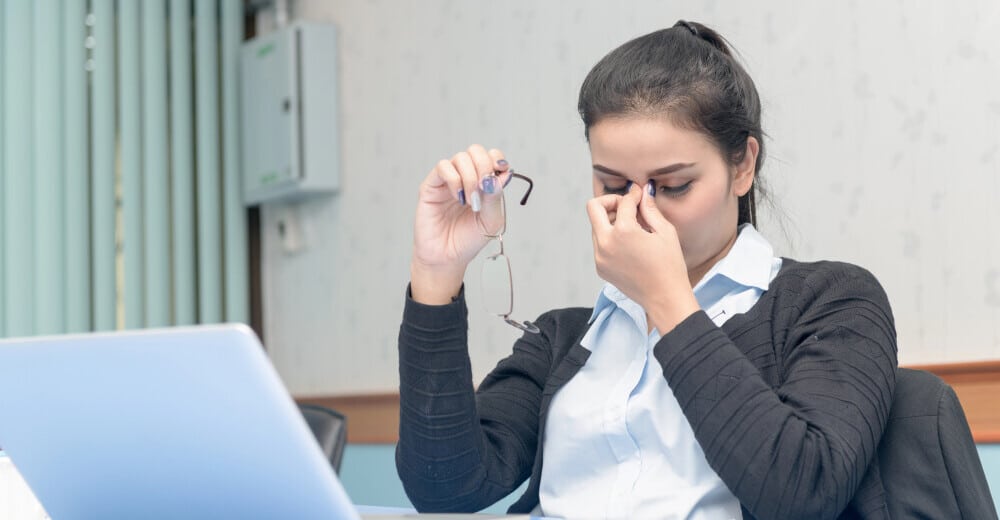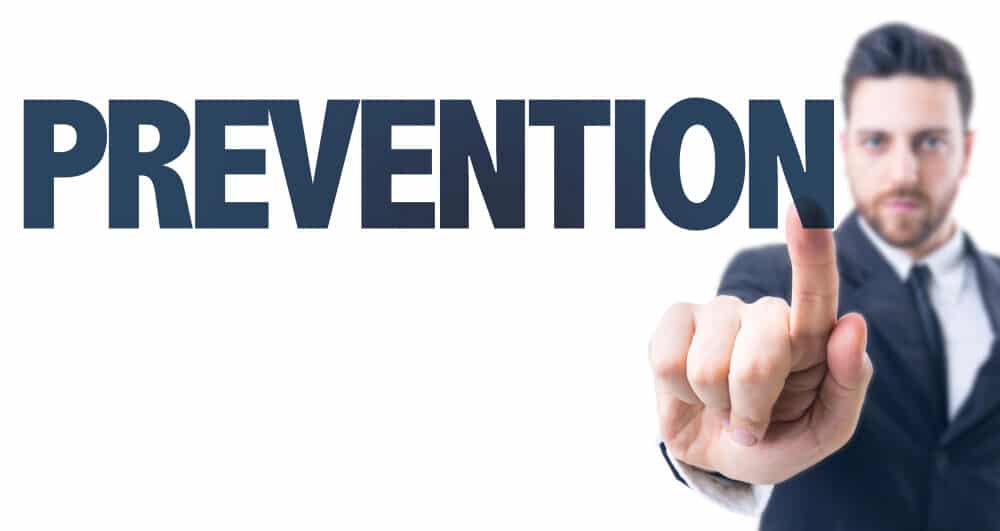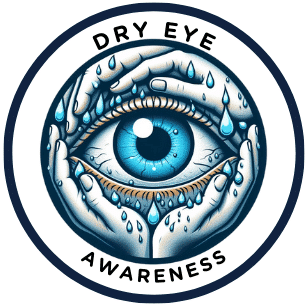
Dry Eye Syndrome (DES) is becoming an increasingly common condition, with symptoms such as persistent dryness, irritation, and fatigue in the eyes. The prevalence of these symptoms has risen hand-in-hand with the ever-increasing screen time in our daily lives. From smartphones to laptops, screens are an integral part of both work and leisure, presenting an undeniable challenge to maintaining eye health.
The effects of screens on our eyes are not to be taken lightly. With numerous studies pointing towards a potential connection between extended screen use and dry eye, it’s crucial to shine a spotlight on this modern health concern. My intention is to arm you with the knowledge needed to safeguard your eyes against the potentially harmful effects of prolonged screen exposure.
Let’s start at the beginning: understanding what Dry Eye Syndrome is and why I believe it’s vital to pay close attention to the way we use our digital devices. As I walk you through the latest findings, we’ll see how our screens might just be more than an essential tool, but also a factor in our eye health that demands respect and caution.
Understanding the Link Between Screen Time and Dry Eye
As our world becomes increasingly digital, it’s important to consider how constant exposure to screens might impact our eyes. Several studies have drawn a connection between long periods of screen use and the development of dry eye syndrome. But why does this happen?
When you look at a screen for an extended time, the blink rate tends to decrease significantly. Normal blinking is vital for spreading tears evenly over the eye surface, keeping it moist and protected. Inadequate blinking can lead to the drying out of the eye’s surface, known as dry eye syndrome.
One of the major contributors to this condition is something called Meibomian Gland Dysfunction (MGD). The meibomian glands produce oils essential for a healthy tear film and proper eye lubrication. Extended screen use can lead to these glands becoming blocked or atrophied, exacerbating dry eye symptoms.
Additional factors that contribute to screen-related dry eye include the brightness and contrast settings on your device, the distance from your eyes to the screen, and the angle at which you view it. Each of these factors can strain your eyes further, increasing the likelihood of experiencing discomfort and dryness.
Now that we have a clearer understanding of how screen time contributes to dry eye syndrome, it’s imperative to explore how we can mitigate these effects. In the upcoming section, I’ll introduce practical strategies to prevent dry eye and ensure the health of your eyes in a screen-saturated world.
Preventative Strategies and Eye Care Tips

When I look at the swelling numbers of people glued to their digital screens, I can’t help but worry about our eye health. Understanding the dangers, though, leads right to prevention. The truth is, safeguarding your eyes doesn’t require monumental effort or drastic lifestyle overhauls. Simple, daily practices can make a huge difference.
Take the 20-20-20 rule, for instance. I’ve discovered it’s a deceptively simple yet effective method to curb eye strain. Every 20 minutes, shift your focus to something at least 20 feet away, for 20 seconds. It’s a habit that has helped me, and it might just be what your eyes are craving for a well-deserved break.
What about your workspace? Take a moment and analyze it. Enhancing your setup to minimize glare and ensure proper lighting can go a long way. An anti-glare monitor or a screen filter could be the quick fix your eyes need. And remember, positioning the screen at a distance of an arm’s length away, with the top no higher than your eye level, isn’t just ergonomics—it’s caring for your vision.
You might also consider moisturizing your eyes like you would your skin. Artificial tears can offer immediate relief for dry eyes. I keep a bottle by my desk, and it works wonders during long stretches of screen time.
Now, don’t skimp on the eye check-ups. Regular visits to the eye doctor for a comprehensive eye exam can catch early signs of dry eye or other vision problems. PREVENTATIVE CARE is key, and professionals can offer tailor-made recommendations based on your screen habits and eye condition.
Bridging the Gap: Future Research and Personal Responsibility
Current research highlights a troubling connection between screen time and dry eye, yet much remains to be discovered. Studies so far provide initial insights but often leave us with as many questions as they answer. What’s clear is that as screen reliance grows, so does the necessity for robust, long-term research to understand the full scope of impact.
I’ve come across numerous personal accounts where reducing screen time has alleviated eye discomfort significantly. Adjustments from screen placement to indoor humidity levels have been shared as beneficial. Nevertheless, these are individual experiences; more systematic, in-depth analysis would help create generalized recommendations.
We’re in an era of constant connection, where unplugging from digital screens is nearly impossible. Knowing this, we should strike a balance. INTEGRATING REGULAR BREAKS, adhering to eye exercises, and being mindful of our screen habits are actionable steps that everyone can take.
If you find it difficult to take breaks from your screen I would recommend that you try to blink more often and consider using artificial tears every hour or two when in front of the computer. I recommend to my patients that they use Refresh brand artificial tears. Any of the Refresh brand tears are recommended but I especially recommend Refresh Digital (#ad) artificial tears for computer users. You can get them here (#ad)(As an Amazon Associate I earn from qualifying purchases).
It’s essential to remind you—as I remind myself—that our eyes are indispensable, and tuning into their needs is not just advised, it’s IMPERATIVE. Visiting an eye care professional regularly can lead to customized care, potentially preventing the aggravation of symptoms.
As the link between screen time and dry eye becomes better defined through research, we must also take control where we can. Knowledge is POWER, and applying preventive measures is WISE. And above all, remember that when it comes to our health, an ounce of prevention is truly worth a pound of cure.
